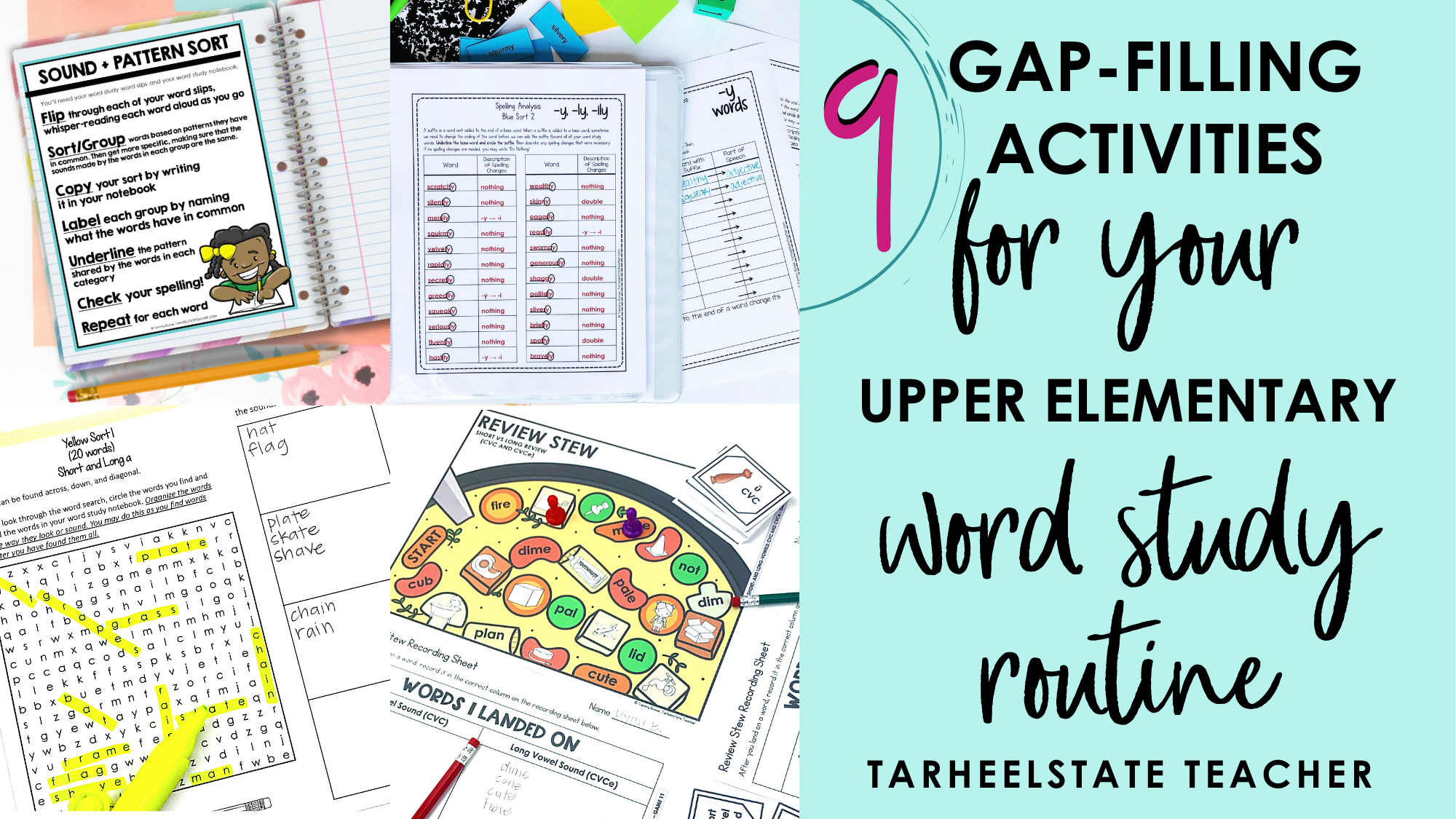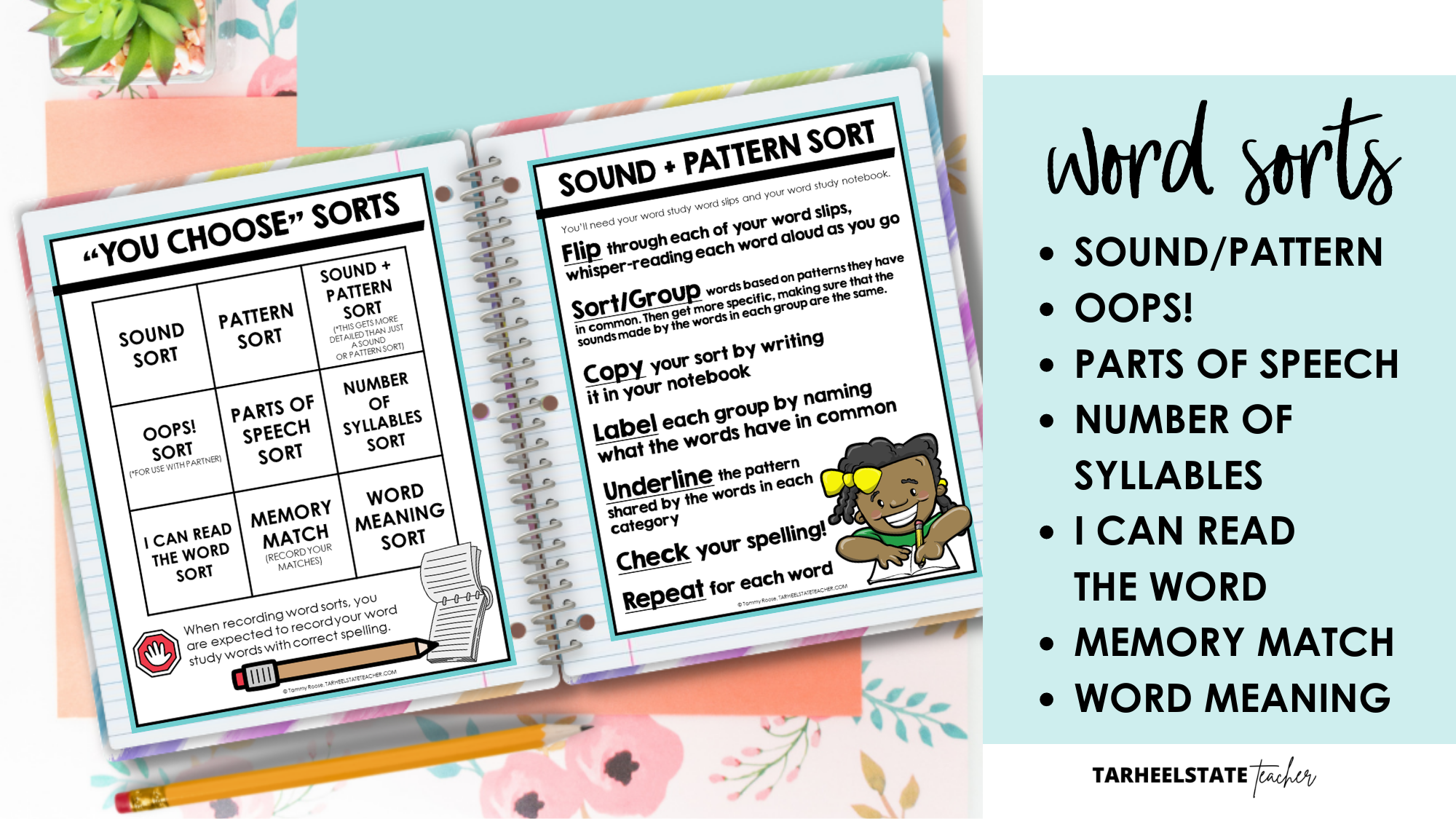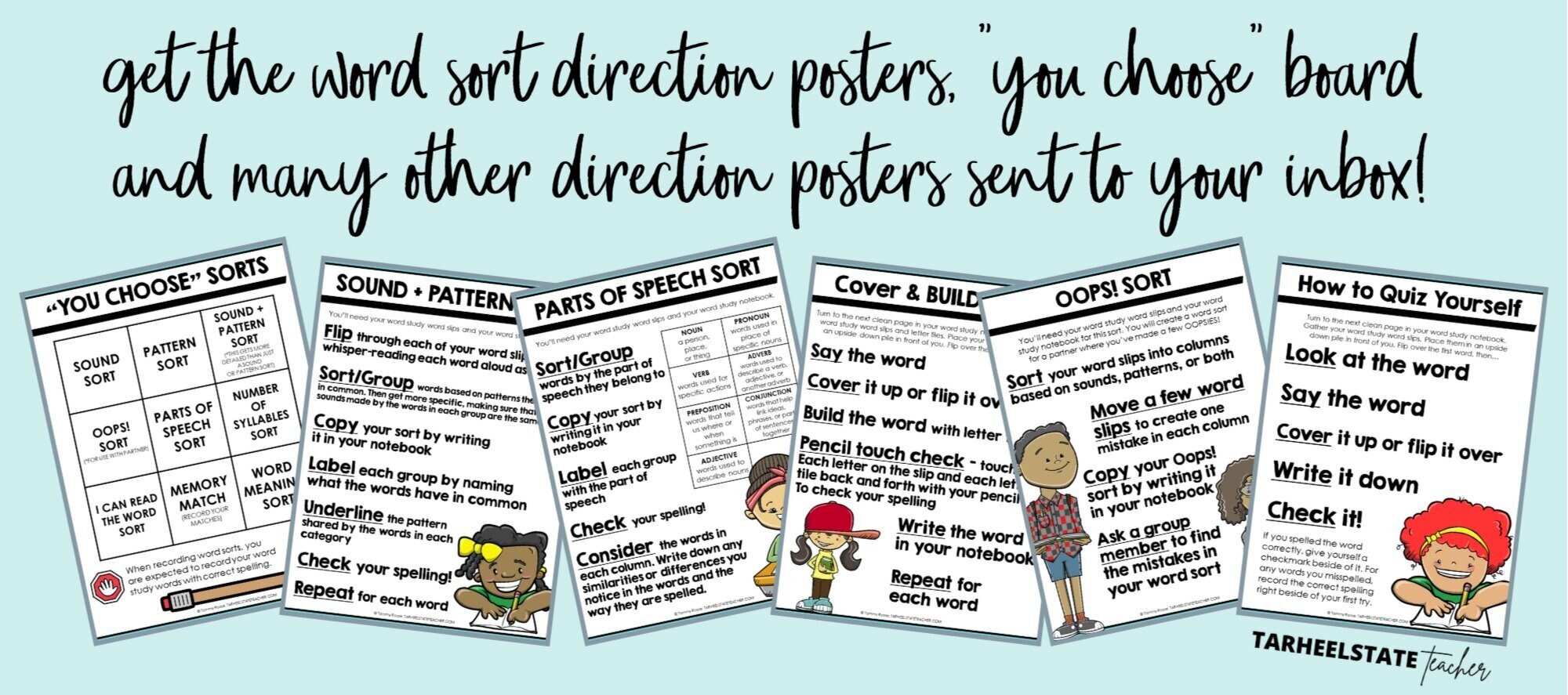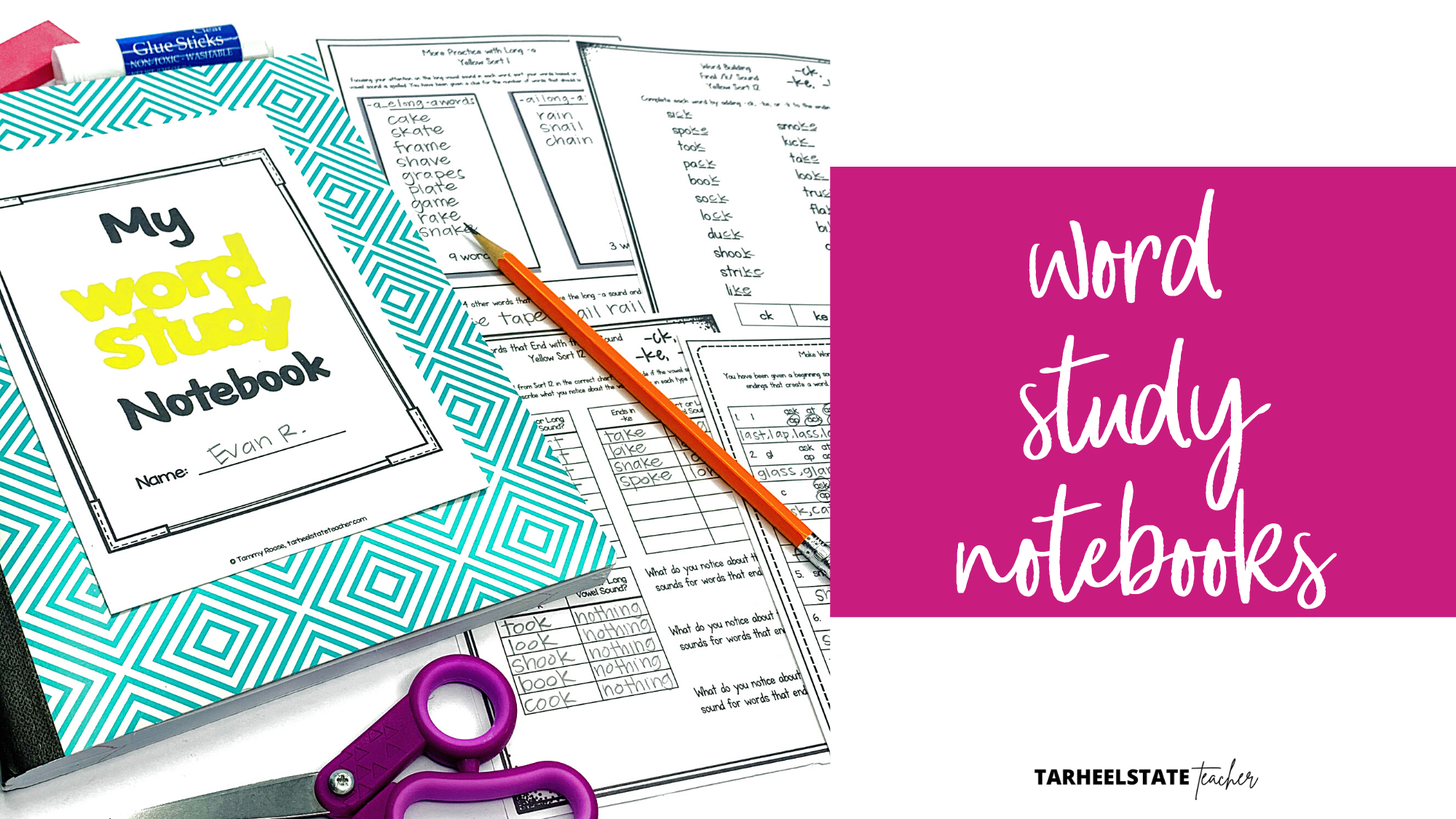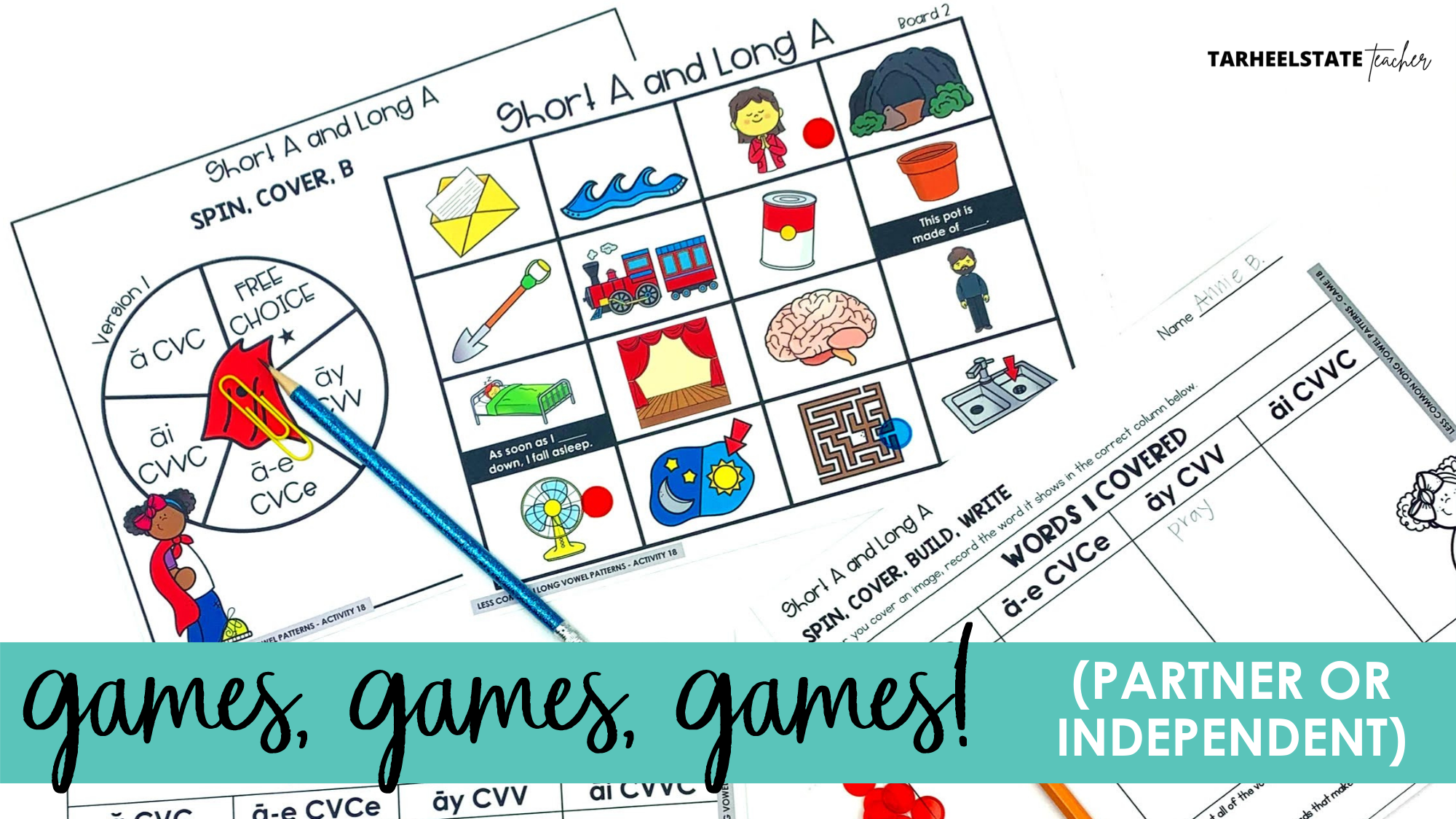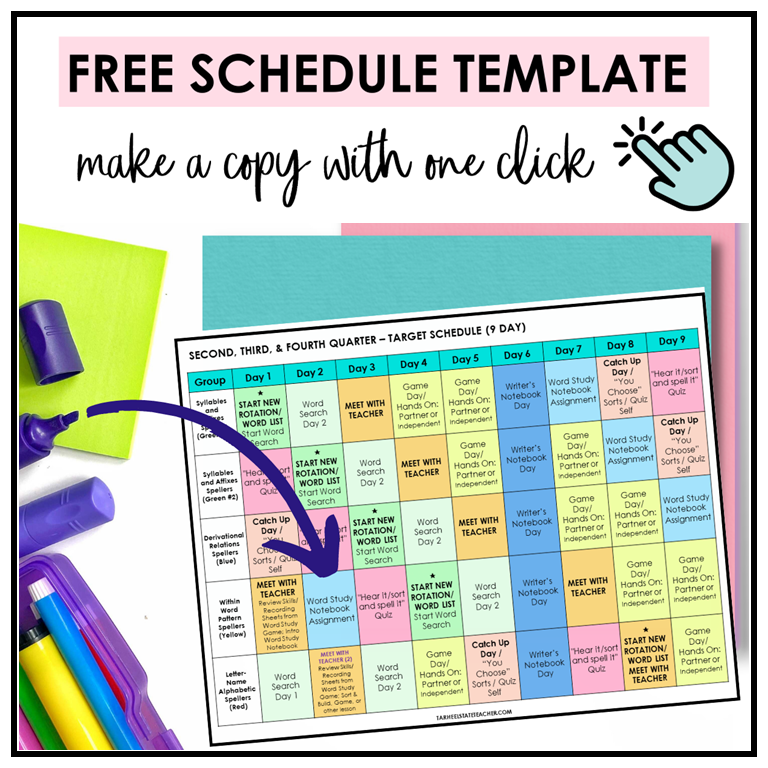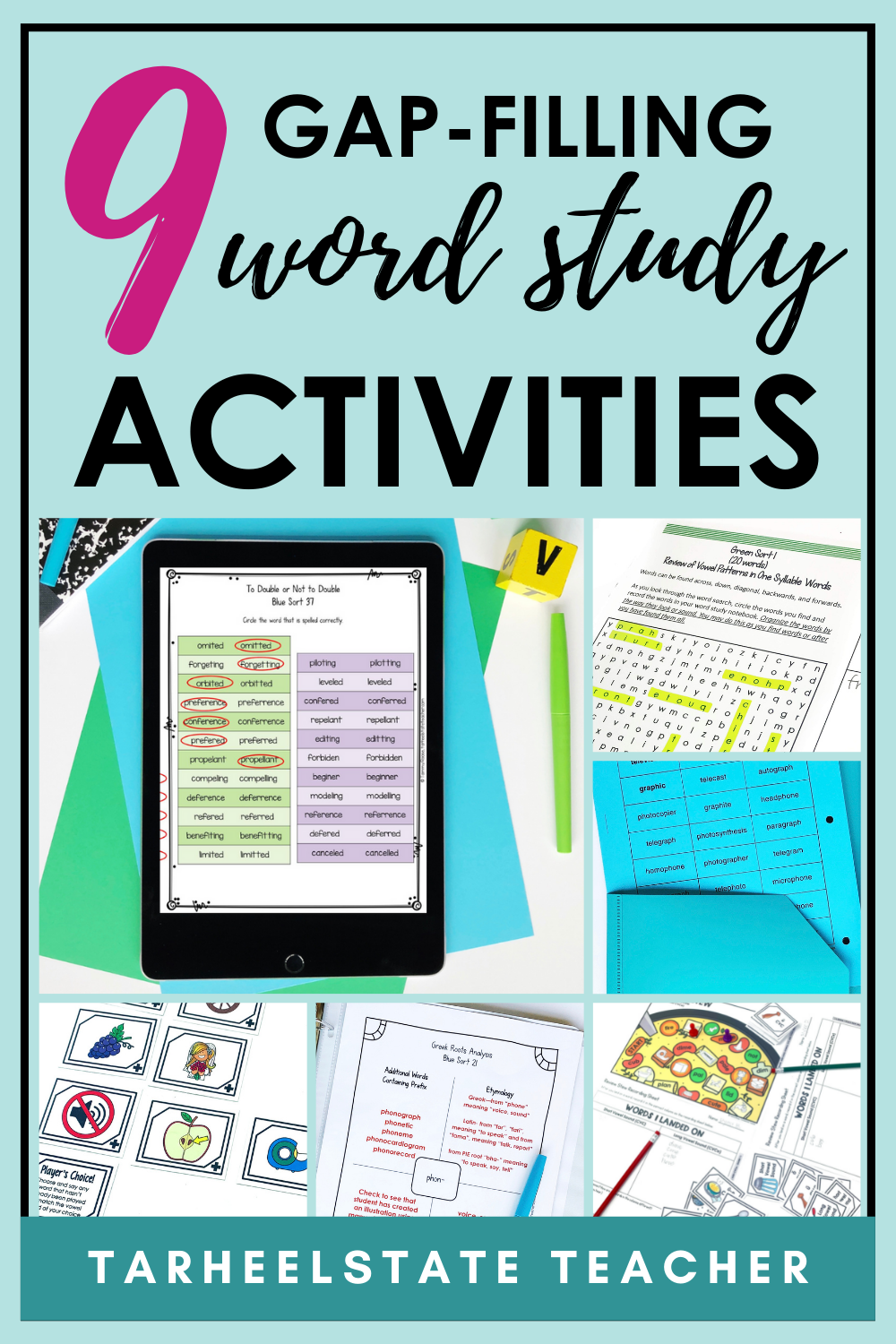9 Activities for your Word Study Routine
I have a confession to make…Planning for word study is one of my superpowers. I like to think about it, I like to talk about it, I like to create activities to help students improve their word study and spelling abilities. You probably don’t want to hear about my dreams of gameboards at night, but I’m so glad my secret is out and that you are here to learn more about word study activities for upper elementary students! Today, I’ve got the ultimate list of word study activities that I use for a well-rounded Words Their Way word study program. If you use another program, you’ll still find ideas that you can incorporate here, including a free set of word study sorting posters. Let’s go!
Note: This post contains affiliate links to the word study resources that I recommend. This means that I am a participant in the Amazon Services LLC Associates Program, an affiliate advertising program designed to provide a means for sites to earn advertising fees by advertising and linking to amazon.com. Read my full disclosure here.
For my word study curriculum, I use the Words Their Way word sort books as my go-to for differentiated word lists and printable sorts. If you would like to see the Words Their Way Word Sort Books, you can find them here on Amazon.
As you check out the activities I use in my word study routine, think of this list as a buffet of activities you can choose from to fill any voids in your word study plans. Need more engagement, to add in the fun, or something to push the depths of students’ understanding? Think about what’s missing and see if any of these activities make sense to add in. As you read these, keep in mind that everything in my word study routine is differentiated with students grouped based on an assessment they take at the beginning of the year.
9 ACTIVITIES FOR WORD STUDY
1) DISCOVERY WORD SEARCHES
I introduce my students to their word study list with word searches. Students search through a word search that does not contain a word list. These word searches encourage students to “discover” or identify a common pattern being used among the words in the word search. When students discover the focus pattern(s) or concepts, they look for more words with that pattern and attune their minds to think about other words that could fit that pattern.
This assignment is designed for use at the beginning of a word study rotation as a way to introduce students to their new word list. I LOVE this activity as an inquiry-based way to launch my word study lists! You may want to add this to your word study routine if your students need some fun and challenge or if they’ve spent years doing word sorts and need a new way to engage with their word study lists. It’s an easy activity to print and go and since it’s repeated at the start of each word study list, students get better and better at them! (I’ve got lots of tips and tricks for success with word study word searches in this blog post.)
Want to give word study word searches a test drive? You can click the button below for sample word searches for each of the 4 word study levels. (I recommend printing one and having a go at it yourself to see what kinds of thinking your brain does while trying to find words with similar patterns. Have fun!) The PDF will open in a new tab.
2) WORD SORTING ACTIVITIES
Oh boy! Word sorts can be so much fun—but they are also an important way to help students discover ideas about the sounds and patterns in words. Since my upper elementary students have experienced pattern-based word sorts in past years, I like to spice it up for them with a “You Choose” menu of word sorting activities. I include the following main sorts on their choice board:
Sound Sort
Pattern Sort
Sound and Pattern Sort—this sort gets more detailed than just a sound or pattern sort for sorts where words may contain the same patterns but make different sounds.
OOPS! Sort—Students create a sort for a partner where they’ve misplaced one word in each column.
Parts of Speech Sort
“I Can Read the Word” Sort
Number of Syllables Sort
Memory Match—This is “sort of” a sorting activity; students play Memory/Match and record matches or pairs of words that have the same sound, pattern, or other connection.
Word Meaning Sort—Students sort their words into categories based on meaning. They can even create a concept map or web showing how the words are related when it works for the given sort!
While some word lists will work better for these sorts than others (for example, it wouldn’t be a great use of time to complete a syllables sort with a word list where all words contain the same number of syllables), it is a nice option to let students choose their activity. In addition, you may modify the You Choose boards for different groups based on their level and what they need to focus on most. An “I Can Read the Word” sort may be very beneficial for students at the Within Word Pattern level, but unnecessary for students at the Derivational Relations level.
If you are interested in adding these sorts to your word study routine, I’ll send the “You Choose” word sort boards along with direction posters for each type of sort to your inbox. Just subscribe below!
3) WORD STUDY NOTEBOOKS
Word study notebooks are a way to encourage students to think deeply about the words on their word lists. I ask questions like: What do you notice about the way these words are spelled? What do you notice about the sounds in these words? What do you notice about the way the beginning/ending changed the meaning of the word? How did the spelling change when (something) was added? How did the spelling change when the tense changed? etc.
In a recent re-reading of Words Their Way (6th Edition), Bear (et al) recommended that students have a word study notebook to house their thinking about their word lists. They also included a list of activities that could be used like a menu of choices to prompt students to think more deeply about their words. But, after years of struggling to utilize a “catch all” word study notebook well, I finally created word study notebooks for Within Word Pattern, Syllables and Affixes, and Derivational Relations Spellers. With thoughtful activities for each sort, these word study notebooks help students engage with the complexities of their word lists.
You can try free samples of the word study notebooks for each level by clicking the buttons below. (A PDF will open in a new tab).
4) MEET WITH THE TEACHER
My students meet with me in small groups based on their developmental level. I try to meet with my two emerging spellers groups twice during their word study cycle, while my other groups meet once. During our time together, we may go over any of the activities listed here. I use this time to give my students a boost with their word searches (if needed), ensure that students understand how to complete their word study notebook activities, and have students play a round of the independent or partner game so that they know how to play when it comes up in their schedule.
5) GAMES, GAMES, GAMES!
(If you cringe at the word “games” for your classroom, let’s call these SUPER FUN, ENGAGING activities 💕!) I mix and match partner games and independent games and activities in my students’ routine. Depending on where we are in the year, my students may play games during their meeting with me, during a whole-group game day, or as part of their word study schedule. Check out different ways to incorporate them in your word study block here.
I’ve created board games, games with spinners, picture board activities, card games, and more to help students practice and reinforce the concepts meant to be taught by their word study lists.
If you’re thinking students will just goof off during game play, have no fear! I include a word study-focused recording sheet that helps hold students accountable, reinforces the concepts taught in the games, and allows me to check to see if students have any misconceptions I need to address individually or during our next meeting. This accountability along with a strong focus on teaching my students the organization, routines, and procedures of using word study games allows games to be a fun part of our routine!
6) LOOK, SAY, COVER, WRITE, CHECK (SELF-QUIZZING)
In Look, Say, Cover, Write, Check (LSCW✓), students do exactly what it sounds like. They take their word lists (from their word sort slips), place them in an upside down pile in front of themselves, flip over the first word, and
Look at the word
Say the word
Cover the word (or flip it over)
Write the word down
Check it by looking at the word slip and comparing.
Then, students give themselves a check beside of the word if it is spelled correctly and record the correct spelling for any misspelled words right beside of their original try. In the word sorting activities download, I’ve included directions for how students can quiz themselves with LSCW✓.
7) WRITER’S NOTEBOOK DAY
I include a day that I call “writer’s notebook day” in my students’ word study cycle. (A writer’s notebook is simply a composition notebook that students use during our writer’s workshop to free write, work on drafts, etc.) During this activity, students go through a page or two of an entry in their writer’s notebook to look for misspelled words. Students can write directly on their writing sample (circling misspelled words and writing the correct spelling above it) or use a sticky note to jot down the correct spellings and attach it to the page.
Writer’s notebook day is important for helping my students make the connection from word study concepts to improved spelling in writing. This activity can be especially beneficial if you have time to analyze common patterns that students are misspelling or want data on the transfer of "word study" to authentic spelling during writing.
8) BUILDING WORDS ACTIVITIES
Building words is a beneficial activity for some students. In this activity, students take a word from their word slips, then
say the word,
build the word with letter tiles,
do a “Pencil-Touch check”—Students touch each letter on the slip and each letter tile back and forth with their pencil to check their spelling,
record the word they built in their word study notebooks.
You can modify this activity to make it a bit more challenging by having students flip over or cover the word before they build it.
9) “HEAR IT/SORT AND SPELL IT” OR “NO PEAKING” ASSESSMENT (BUDDY QUIZ)
To check students’ progress on learning to spell the words from their word list, you can implement a “Hear it/Sort it and Spell it” assessment. (I formerly called this a “blind” assessment, but I have updated the language for sensitivity and to more clearly describe what students do. This could also be called a buddy check or buddy quiz.)
Ideally, the teacher is able to call out words to students on their quiz day, but often times, it’s easier to set students up with a buddy from a different group who will read their word list to them.
WHAT IF YOU HAD THE DREAM WORD STUDY SCHEDULE?!
👉 We know that we have a wide range of spelling abilities in our upper elementary classrooms and that students are not on the same level in their word study and spelling development.
💜 A differentiated program helps students fill in the gaps in their learning of phonics, spelling, and how words work. Differentiated spelling routines put spelling success within students’ zone of proximal development.
👉 While spelling is often a minimalized instructional piece in upper elementary classrooms, students’ spelling abilities can be one of the most stigmatizing factors in their academic performance. Students who have difficulty spelling well may resist writing during your writer’s workshop or other content-area writing activities.
💜 The idea that all students are working to understand words better and become better spellers normalizes not knowing how to spell all words—no matter what level students start from.
How long does it take to make a difference in our students’ attitudes and abilities toward spelling?
Can you believe that a word study routine of 15-20 minutes 3-5 times a week can positively affect your students? It’s true!
If you want to see the word study schedules that worked in my classroom and made a difference in my students’ spelling abilities, click here to make your own copy of my sample word study schedules—perhaps you’ll see why word study quickly became one of my teacher obsessions!

